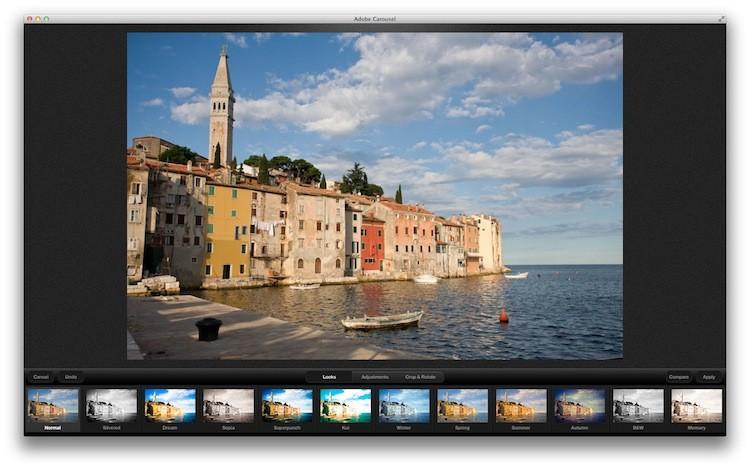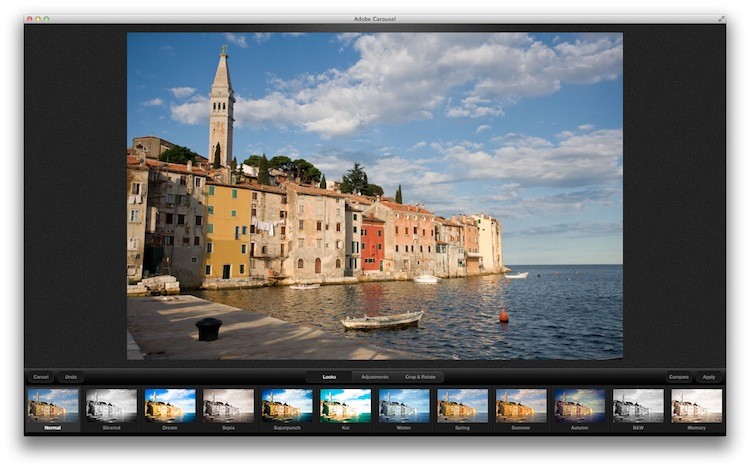Anyone who has labored to upload a collection of photos from their phones to their computers, or begged and pleaded friends for pictures knows that transferring photos between devices can be a major hassle.
Adobe hopes to change this with Carousel, a new application released Sept. 7. The software will automatically sync photos between a computer, a phone, and a tablet. It is subscription based, but users can share it with up to five friends, who will also have full access to all its features, and who will automatically share any photos with you that they upload.
The application is both cloud- and local- based, meaning that photos are shared through devices through the Internet, but users still keep the original photos on their computers.
When a user uploads an image, it appears almost instantaneously on all other devices signed into its collection. In a demonstration of the service there was very little noticeable load time, although the presenter noted that load times will change based on image size, and on how good a user’s Internet connection is. Uploading requires no plugging in, no syncing devices, and no tricks or long procedures.
He also mentioned that there is no limit to file sizes, but image types are restricted to JPG (which is the default for most devices outside professional DSLR cameras). Once photos are up in the cloud, the subscriber, or any of the five friends they can pass the service to, can download the full images.
Adobe took a minimalist approach to designing Carousel, wanting to eliminate what they dubbed the “pain points.” As stated in an early presentation of the software, their key goal was to do anything but develop a “new kind of pain for people.” The idea here is simplicity, and Adobe has done a fine job at it.
The application shares nearly the same interface between any device it is used on, with the only difference found in sizing to make it usable between phones and other small devices. The interface itself is just rows of images on a dark background. Each row represents the day the photo collection was uploaded, and scrolling between these can be done with either a finger swipe or by the scroll of a mouse.
Users can also choose to edit their images within Carousel, which brings up three different buttons: Looks, Adjustments, and Crop & Rotate.
The photo editing features are surprisingly thorough for what looks like a light application and shares some similarities to Adobe Lightroom. Users have access to all the essential tools to adjust color, correct lighting, and rotate images. The features are also available to users on iPhones or iPads, since all the adjustment tools are based on sliding bars.
There are also editing presets that let users automatically add some of the more popular edits to their photos—such as black and white, the aged look, or more vibrant or dream-like options. All edits are also nondestructive, meaning they do not alter the original image. Users can undo any edits instantly.
Sharing is also one of the main features of Carousel, allowing users to instantly upload images to Facebook or Twitter.
As mentioned earlier, the software is subscription-based (one of the few drawbacks, in my opinion). Early adopters will get it for $5.99 a month, or $59.99 a year, but those who come in later will need to pay $9.99 a month, or $99.99 a year.
To make the subscription model a bit more attractive, users can upload an unlimited number of photos, and Adobe offers a complimentary 30-day trial to anyone interested in giving it a shot—which is enough time to last for any vacation, and the slow return to society stage that inevitably follows.
Currently, Carousel is only available for the Mac, iPhone, and iPad, but Adobe will open this up to Windows and Android platforms in 2012.









Friends Read Free